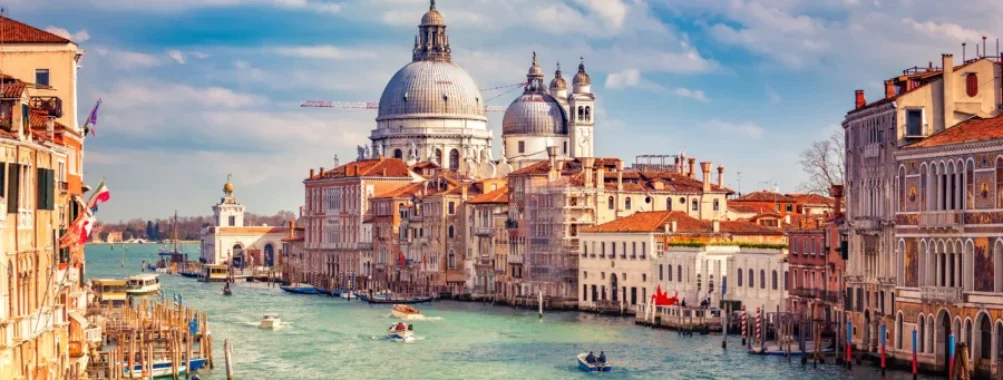
Avoiding Tourist Taxes in Venice: 7 Insider Tips to Save Money on Your Next Trip
Ever tried making sense of Venice’s tourist taxes and ended up feeling like you’re stuck in a labyrinth of gondolas? You’re not alone. The city’s got more than one kind of visitor fee these days, and the rules aren’t exactly posted on every bridge. Most travelers do have to pay the required tourist taxes, but if you know the loopholes, you can dodge paying extra—or worse, paying when you didn’t even need to.
I’ve watched plenty of travelers fork over more than necessary just because nobody bothered to point out the fine print. You shouldn’t have to settle for that, especially when every euro could be better spent on another scoop of pistachio gelato. With a bit of street-smart know-how, you’ll avoid overpaying during your stay in this unforgettable city.
Table of Contents
- Key Takeaways
- Understanding the Venice Tourist Tax System
- What Is the Venice Tourist Tax?
- Types of Tourist Taxes in Venice
- Why the Tourist Taxes Were Introduced
- Venice Access Fee vs. Overnight Tax
- Who Is Required to Pay and Who Is Exempt
- Exemptions and Reduced Rates
- People With Disabilities and Other Special Cases
- Children and Youth Policies
- How and When Tourist Taxes Are Collected
- Tourist Tax Collection Points
- Online Payment Methods
- Role of Accommodation Facilities
- Tips for Legally Avoiding or Minimizing Venice Tourist Taxes
- Planning Your Visit During Exempt Periods
- Choosing Accommodation Outside The Historic City
- Day Trip Strategies and Nearby Islands
- Impact of Tourist Taxes on Venice Travel
- Effect on Daily Visitors and Overnight Guests
- Influence on Sustainable Tourism
- Revenue Allocation and City Maintenance
- Exploring Venice and Surrounding Islands on a Budget
- Visiting Murano, Burano, and Lido di Venezia
- Free and Low-Cost Activities
- Transport Tips and Ticket Bundles
- Venetian Attractions and How Tourist Taxes Apply
- Museums and Cultural Sites
- Landmarks: Rialto Bridge and Doge’s Palace
- Events and Festivals
- Frequently Asked Questions
- What are the legal implications of evading the tourist tax in Venice?
- Can exemptions to the Venice tourist tax be granted under specific circumstances?
- What methods are employed by local authorities to enforce tourist tax compliance?
- Are there different tourist tax rates depending on the type of accommodation in Venice?
- How has the tourist tax in Venice changed over the past years?
- What are the penalties for not paying the tourist tax while staying in Venice?
- Book Your Dream Experience
- More Travel Guides
Key Takeaways
- Venice charges both overnight and entry taxes for most visitors.
- Some people and situations might be exempt from certain fees.
- Knowing the ins and outs of when and how to pay can save you money.
Understanding the Venice Tourist Tax System
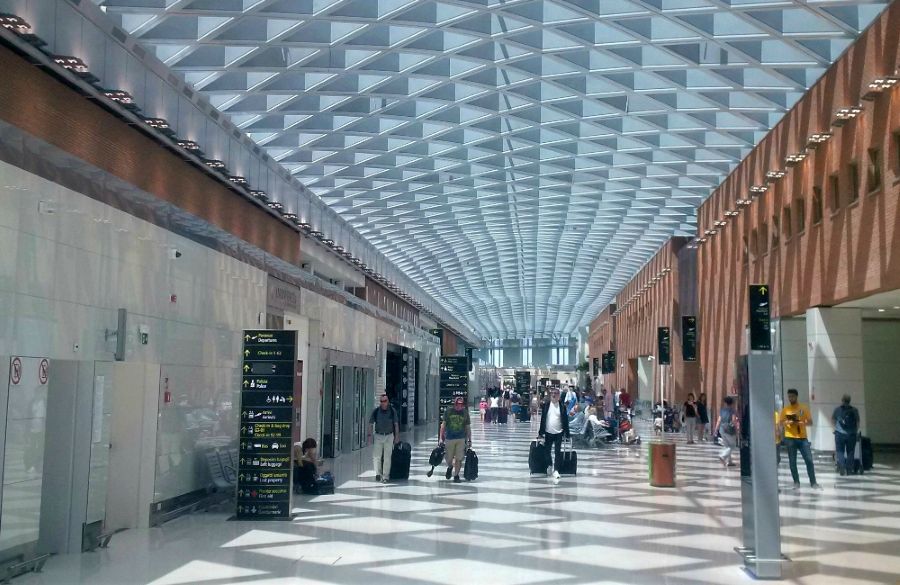
Venice has started charging nearly every visitor, whether you’re just popping in for a few hours or staying the night. If you’re planning a trip, you’ll want to get clear on what you’re paying for—and, honestly, why these taxes even exist.
What Is the Venice Tourist Tax?
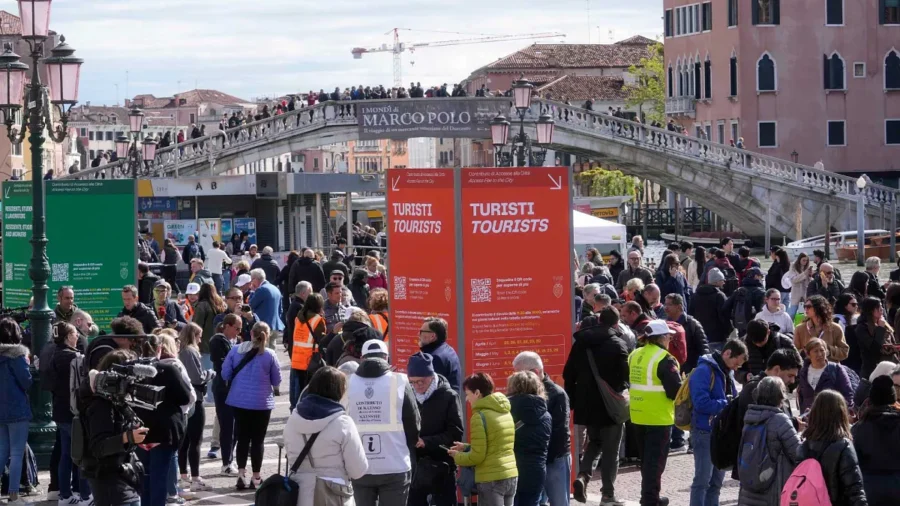
When you first set foot in the historic city, you’ll probably spot signs about a tourist tax—sometimes called the “Venice Access Fee” or the “overnight tax.” It’s not some sneaky charge, but it’s surprisingly easy to overlook when you’re booking.
Venice is just trying to handle the flood of visitors and protect itself from the damage of mass tourism.
If you don’t pay attention, you might find yourself scrambling to pay the fee from your phone after you’ve already entered the city. Not the best way to kick off a day in Venice.
The fee isn’t the same for everyone; it depends on how you visit. Kids, some disabled travelers, and a handful of other groups can skip it—so double-check if you’re one of the lucky ones. For most people, though, you’ll need to budget for at least one of these charges.
Types of Tourist Taxes in Venice
Venice splits its tourist taxes into two main buckets:
- Venice Access Fee: Mostly for day-trippers who don’t sleep in the city.
- Overnight Tax: For anyone staying in hotels, hostels, or short-term rentals.
If you’re just swinging by to snap a selfie at St. Mark’s Basilica and head back to your cruise ship, you’ll owe the access fee. If you stay overnight, expect the city tax to show up on your hotel bill—usually at checkout.
Both taxes aim to manage the flow of visitors. Unlike other places that only charge overnight guests, Venice casts a wider net. The city posts instructions on its website and in hotels, but even locals get tripped up sometimes.
Honestly, the system’s not exactly intuitive, so keep your wits about you and look for official info.
Why the Tourist Taxes Were Introduced
Venice’s crowds have become the stuff of legend. Some days, it feels like the tourists outnumber the pigeons—and that’s saying something.
The city rolled out these taxes to slow the flood and make tourism a little more sustainable. The extra cash helps pay for public services, repairs, and just keeping the city afloat (sometimes literally). They also hope to keep daytripper numbers in check, especially on crazy-busy weekends and holidays.
From what I’ve seen, Venice really does need the help. The narrow alleys get packed, and local life can disappear under the crush. The taxes can feel like a pain, but the city’s betting they’ll help Venice stay livable and beautiful—not just a backdrop for someone else’s vacation photos.
Venice Access Fee vs. Overnight Tax
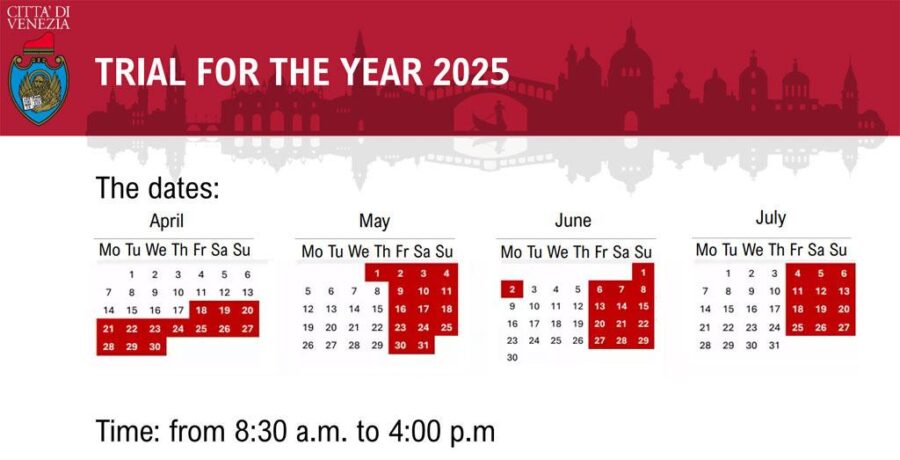
It’s easy to confuse the two, but they’re not the same. Here’s a quick breakdown:
| Tax Name | Who Pays | When is it Charged? | How Much? | How to Pay |
|---|---|---|---|---|
| Access Fee | Day visitors (not sleeping) | Only on select dates in 2025 | Usually €5-€10 | Online, before entering |
| Overnight Tax | Overnight guests | Every night you stay | Varies by hotel type | Added to hotel bill |
Day visitors should check if their travel date falls on a fee day. If you’re staying overnight, your hotel’s star rating will decide how much you pay.
Venice actually checks at busy entry points, so don’t count on slipping by unnoticed. Figure out your payment plan ahead of time or risk wasting precious time in line.
Most visitors get blindsided by the access fee since it’s rare elsewhere. But if you’re organized, it won’t wreck your trip.
Who Is Required to Pay and Who Is Exempt
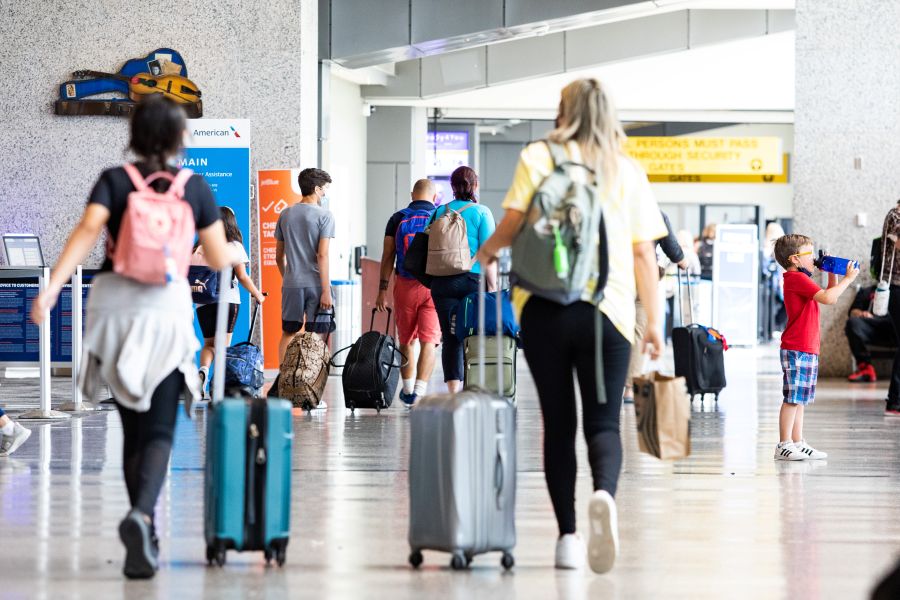
Venice sets a patchwork of rules for tourist taxes and the access fee. Who pays (and who doesn’t) depends on your reason for visiting, where you’re staying, and even what time you arrive. Get the details right and you’ll save both money and headaches.
Exemptions and Reduced Rates
If you book a night in Venice—hotel, B&B, hostel, whatever—you skip the access fee for day visitors on those special dates. Don’t get too excited, though; you’re still paying the nightly tourist tax.
Just one night is enough to count as an overnight guest and dodge the access fee, but you’ll need a QR code from your accommodation. That code is your golden ticket if anyone asks—no code, no proof.
Day visitors without a bed booked are the main targets for the access fee. But if you arrive before 8:30 am or after 4:00 pm, you’re off the hook. These rules only kick in on certain “fee days,” usually holidays or weekends. I always double-check the official city calendar before booking anything.
Special events—think local conferences or sports tournaments—can get you exempted, too. Usually, the organizers take care of registration. If you’re in town for business or to see family, ask ahead; you might not owe a thing. Italy loves a good exception, so it never hurts to read the fine print. For more up-to-date travel hacks, travel tips for Venice are worth browsing.
People With Disabilities and Other Special Cases
Travelers with disabilities—mobility, cognitive, sensory—don’t have to pay either the access fee or the tourist tax. Bring official documentation, and, from my own misadventures, I’d suggest a copy in Italian if you can manage it.
Caregivers and family members who are there to help someone with a disability can also skip the fee, as long as their trip is directly tied to that support. Medical appointments count, too.
Venice residents and people with second homes in the city don’t pay the access fee. You’ll need to show proof of residence or ownership, though. Sometimes a utility bill is enough. Don’t be shocked if you get different answers from different officials—Italy’s bureaucracy isn’t exactly famous for consistency.
Children and Youth Policies
Kids under six? They’re always free—no tourist tax, no access fee, no paperwork.
For older kids and teens, things get a bit more complicated. Tourist taxes usually kick in at age 10, so anyone 10 and up pays. The access fee sometimes gives discounts or waives it for those under 14, but city policies change, so double-check before you go.
Honestly, Venice is one of the more kid-friendly Italian cities when it comes to these fees. Teens on school trips or cultural exchanges might get group exemptions. If you’re traveling with a youth group or for a special event, check if your crew qualifies. That little detail can save you a surprising amount, especially during high season.
How and When Tourist Taxes Are Collected
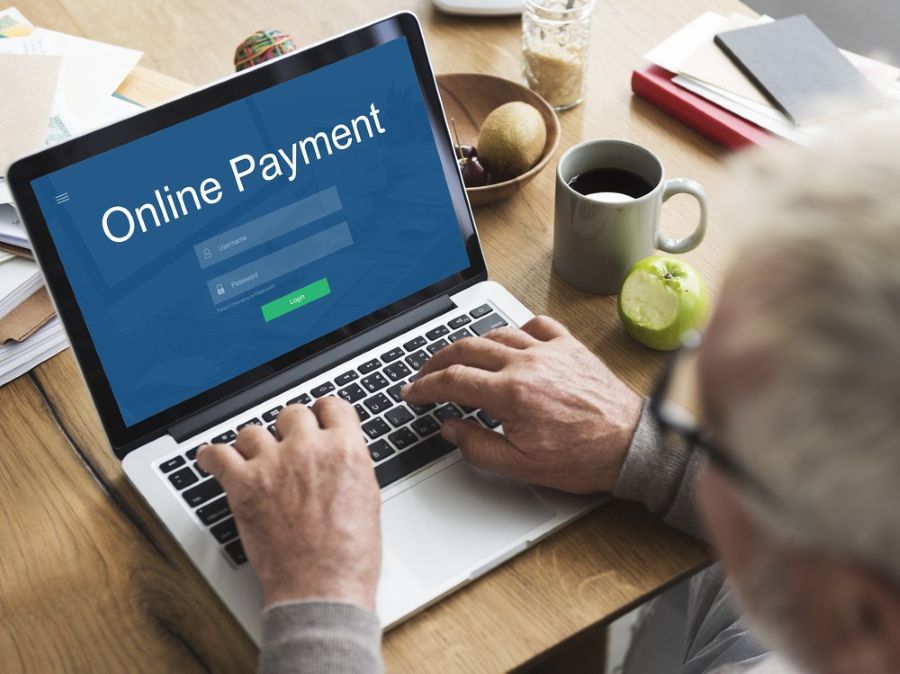
Venice collects tourist taxes in a few different ways, depending on your length of stay and where you sleep. Whether you’re popping in for a day or settling in overnight, you’ll pay your dues at certain points—sometimes before you even step onto a vaporetto.
Tourist Tax Collection Points
Day-trippers usually face the access fee at main entry points—think train stations, parking garages, ferry docks, or the causeway from the mainland. I can’t count how many times I’ve seen signs about the fee as soon as I left Piazzale Roma.
You won’t find the tourist tax everywhere in Venice—just at official entry points and online. If you’re dropping your bags at a luggage storage spot near the station (like the ones listed for luggage storage near landmarks), keep an eye out for QR code posters or payment machines. They’re pretty hard to miss.
On busy weekends, officials sometimes stop visitors at random and ask for proof of payment. If you can’t show your QR code or receipt, they’ll fine you on the spot. Not exactly the memory you want from your trip.
Online Payment Methods
Most people pay the Venice access fee through the official Venezia Unica portal or with a Venice Pass if they have one. Some travelers buy tickets or pay the tax on their phones while riding the train in. I always recommend sorting this out online before you go—it’s one less thing to worry about when you arrive.
The process is straightforward: go to the site, fill in your details, pick your date, and pay by card. You’ll get a PDF or QR code. That code is your lifeline—keep it handy. I once watched someone fumble with their phone in the sun and nearly get a fine because they couldn’t pull up their code fast enough.
You can’t pay the day access fee in cash at entry points. If your hostel offers to handle it for you, double-check—most day-trippers do it themselves on the website.
Role of Accommodation Facilities
If you stay overnight, your accommodation collects the nightly city tax (tassa di soggiorno) at check-in or checkout. This is separate from the access fee for day visitors. The hotel or property manager just adds it to your bill.
Hotels on the islands (not the mainland) collect this fee for the city, and if you rent an apartment, the owner should tell you about it before you arrive. If you spot a tourist tax line on your bill, that’s normal. The rate depends on your accommodation type and season, but there are posted rates. In my experience, front desk staff usually mention it, but if they don’t, just ask.
If you’re staying outside Venice proper, you won’t pay the main city tax or access fee unless you actually visit Venice during the day. Some suburbs have their own local taxes, but those aren’t the same as Venice’s official tourist fees.
Tips for Legally Avoiding or Minimizing Venice Tourist Taxes
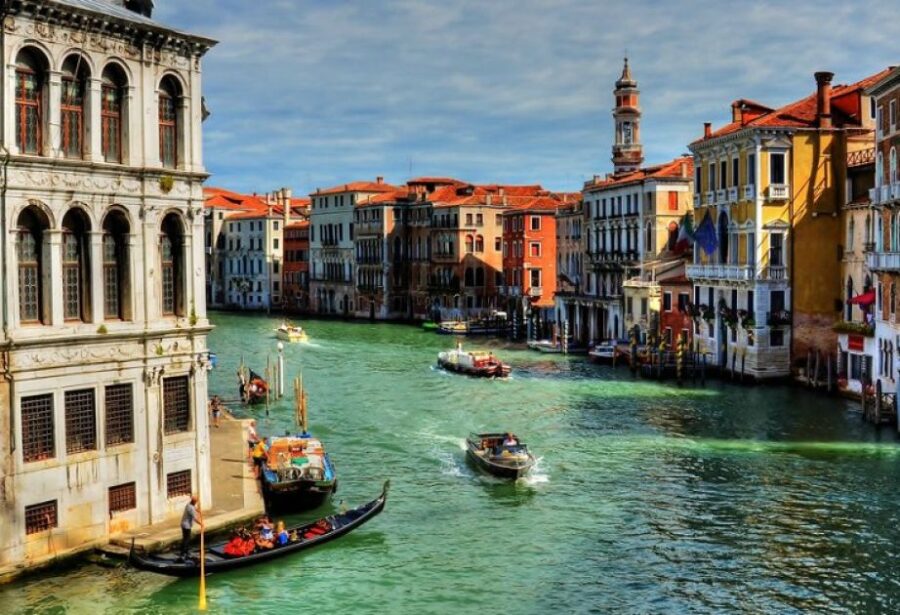
You can avoid or cut down Venice’s tourist taxes without breaking any rules. Smart travel planning, picking where you stay, and thinking through your day trips all make a real difference.
Planning Your Visit During Exempt Periods
Venice asks most tourists to pay a daily entry fee during peak times, but not every day falls under these rules. The city only enforces the tax during the busiest months, on weekends, and for certain holidays.
If you swing by in the low season or on a random weekday, you probably won’t pay the access fee at all.
Honestly, Venice in winter? It’s a different world. Smaller crowds, lower hotel prices, and you’re far less likely to get fined for missing proof of payment.
Keep an eye on the official city calendar, though, and always double-check which dates the tax hits before you lock in your trip. That bit of planning can save you more than you’d think—money better spent on gelato or maybe a spritz, right?
If you’re flexible, try flying in outside the big festival windows. I’ve set flight deal alerts on cheap ticket sites to help me catch those exempt periods.
Choosing Accommodation Outside The Historic City
You only pay the overnight tourist tax if you actually stay in Venice’s historic center. Many travelers don’t realize just how close and easy the mainland suburbs—like Mestre—are.
Crash there and hop on a quick train or bus (they run all hours). No access fee, cheaper hotels, and you avoid wrestling suitcases through Venice’s maze of bridges.
Lido di Venezia, technically part of Venice, usually charges a lower tax—or none at all if you meet certain exemptions. I once stayed out in the Veneto region, caught an early Vaporetto, and dodged both the entry fee and pricey hotels.
The cafés in Mestre? Perfect for a budget breakfast. Honestly, I’d do it again.
Here’s a quick comparison of overnight tax rates:
| Location | Likely Tax Applied |
|---|---|
| Historic City | Full tourist tax |
| Mainland (Mestre, Marghera) | Often exempt |
| Lido di Venezia | Lower or exempt |
| Veneto region outside city | Usually exempt |
Day Trip Strategies and Nearby Islands
If you’re just dipping into Venice for the day, you might still get hit with the entry fee, depending on when and where you arrive. But there’s a clever workaround if you focus on the islands.
Many small islands—Murano, Burano, Torcello—don’t enforce the same tourist fee rules as the main city. Stay there, or start your day on an island with a Vaporetto, and you can sometimes slide into Venice for free on exempt days.
You’ll get a fresh look at the lagoon, too.
Try planning your entry for before the tax hours start or after they end. I love arriving at sunrise—no crowds, no day fee, and the city feels almost yours.
If you want cheap flights to Italy and want to time your arrival just right, sign up for fare alerts. That way, you don’t end up overpaying for both airfare and access fees.
Impact of Tourist Taxes on Venice Travel
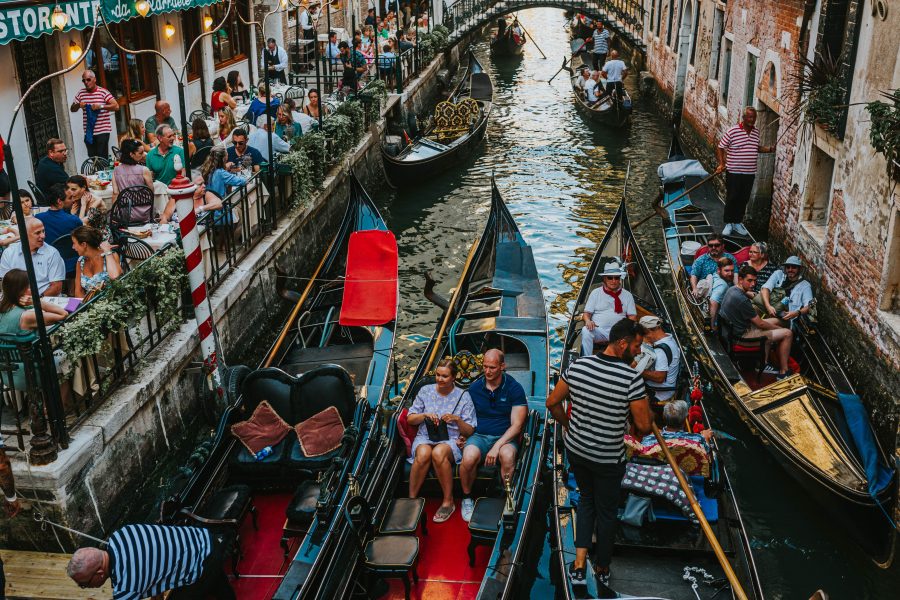
Tourist taxes in Venice have really changed how people experience the city. These fees shape not just your planning, but how the city feels once you’re there—think cleaner streets, less chaos, and a city that actually stands a chance at surviving the tourist onslaught.
Effect on Daily Visitors and Overnight Guests
Day-trippers now pay a €5 access fee. It’s not a huge sum, but honestly, it’s enough to make some folks reconsider a short visit.
If you stay overnight, your hotel will tack on a separate city tax. The amount varies, but from what I’ve seen, it usually ranges from a couple euros to a bit more if you’re splurging.
Locals and nearby residents skip the tax, so you’ll see them breezing through. For the rest of us, these fees help thin out the crowds—especially on those shoulder-to-shoulder weekends.
Quick comparison of taxes for different types of visitors:
| Visitor Type | Tax | Exemptions |
|---|---|---|
| Day Visitor | €5 Access Fee | Veneto locals |
| Overnight Guest | ~€2-5/night | None |
| Children/Residents | Varies | Often exempt |
It’s not a perfect system, but it does change who comes and when. If you time your visit right, you’ll see the difference.
Influence on Sustainable Tourism
Venice has always fought a battle with overtourism. Too many people at once? Old bridges get battered, piazzas fill with trash, and honestly, it’s rough on everyone—including you.
By charging an entry fee, Venice tries to balance out the flood. It’s a tricky balance, for sure. The city doesn’t want to turn you away, but it does want to avoid those overwhelming days.
I’ve noticed that after these fees came in, the city feels a bit calmer. Not empty, but you’re not elbow-to-elbow everywhere you go. For anyone who cares about sustainable travel (and not ruining those canal views), the fees do help spread out the crowds and take some pressure off Venice’s fragile infrastructure.
Sometimes it’s annoying to pay extra, but let’s be real—cleaner canals and quieter streets are worth a couple euros.
Revenue Allocation and City Maintenance
So, where does your money end up? Venice doesn’t just toss tourist taxes into a black hole. The city uses much of this cash for cleaning, repairs, and projects to keep Venice livable for locals and beautiful for us visitors.
You’ll see cleaning crews out early every morning—sweeping, hauling trash, scrubbing ancient stone. That’s your tourist tax doing its job.
And there’s a ton happening behind the scenes: flood barriers, sewage fixes, all the stuff you never see but that costs a fortune. When you pay those fees, you’re helping Venice fight back the tide—sometimes literally.
I’ve watched crews battle floodwaters with nothing but brooms and waders. Knowing my euros help out? I’m good with that.
Exploring Venice and Surrounding Islands on a Budget
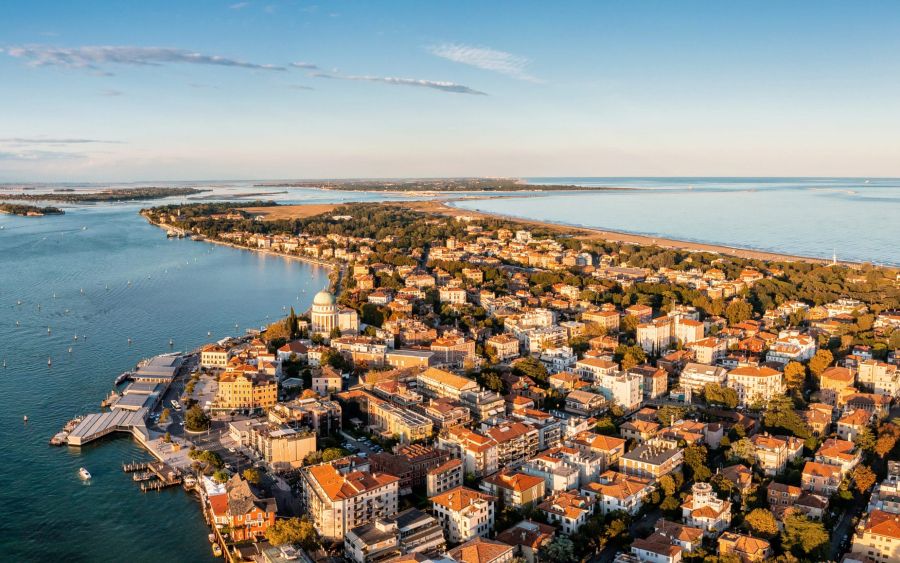
You don’t need deep pockets to explore the islands of the Venetian lagoon or to make the most of Venice itself. Plan ahead and pick your activities wisely—you’ll save a bundle and still get that authentic Venetian vibe.
Visiting Murano, Burano, and Lido di Venezia
If you’re after the best island escapes, Murano, Burano, and Lido di Venezia are absolute musts. Murano’s glassblowing studios are open to visitors, and you can watch the artists at work for free. Honestly, I’ve lost track of time just standing there, mesmerized.
Burano? It’s so colorful it almost feels fake, with its painted houses and quiet canals. Lace-making shops usually welcome visitors without charge.
Lido’s long sandy beaches are a great break from the city crowds, and you don’t need to pay a cent to enjoy them. If you want to stay overnight, Mestre or the islands themselves offer some surprisingly affordable places to sleep. I’ve scored good deals through sites that round up cheap apartments and hotels—definitely worth a look, especially off-season.
Free and Low-Cost Activities
Venice isn’t just museums and expensive meals. Some of the best experiences are totally free—wandering the maze of alleys, getting lost over tiny bridges, or just people-watching in a quiet campo.
I love grabbing picnic supplies from a small grocery and plopping down by the water as gondolas drift past. You don’t need to shell out for a gondola ride unless you’re feeling flush.
Browse the Rialto market for its energy—and sometimes you’ll score a free sample. Many churches, like Santa Maria della Salute, open their doors for free or just a small donation if you want a peek at Venetian art. And if you’re into art, some galleries offer free entry days—just ask around.
Transport Tips and Ticket Bundles
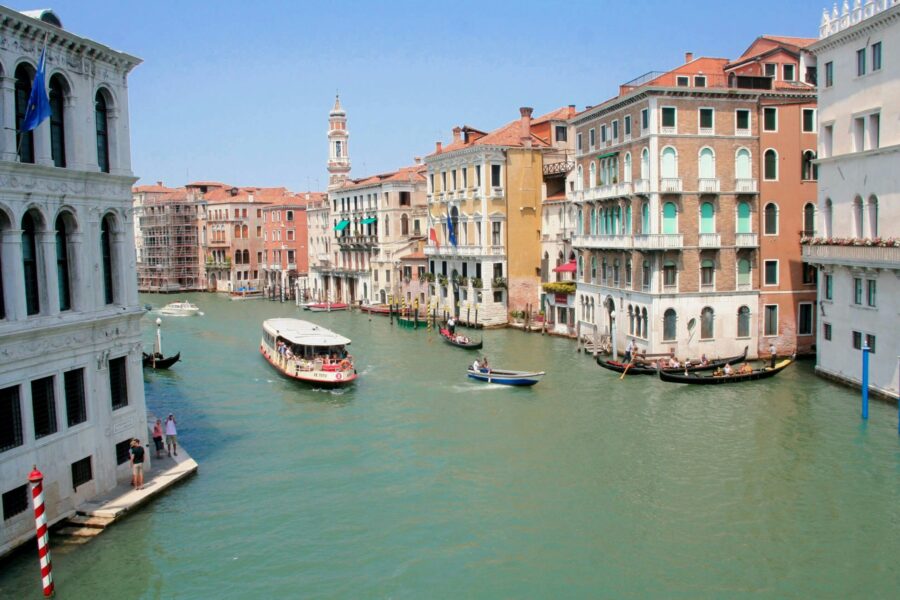
If you’re bouncing between islands or zipping around Venice, the Vaporetto (water bus) is your best move. Single rides add up fast, so I always grab a 24-hour or multi-day ACTV pass. That covers the lagoon and most islands, so you can hop to Murano, Burano, Lido—no stress over mounting costs.
Check if you qualify for youth or senior discounts, or if you’re staying a few days, look into bundled deals like a Venice Pass. Sometimes they throw in public transport plus discounted attraction entries.
I always compare deals for transport and stays on travel sites that let you book everything together—it saves time and, honestly, headaches if your plans shift.
And don’t forget—packing the right travel gear makes life so much better when you’re on the move. A sturdy backpack and decent shoes are non-negotiable.
Venetian Attractions and How Tourist Taxes Apply
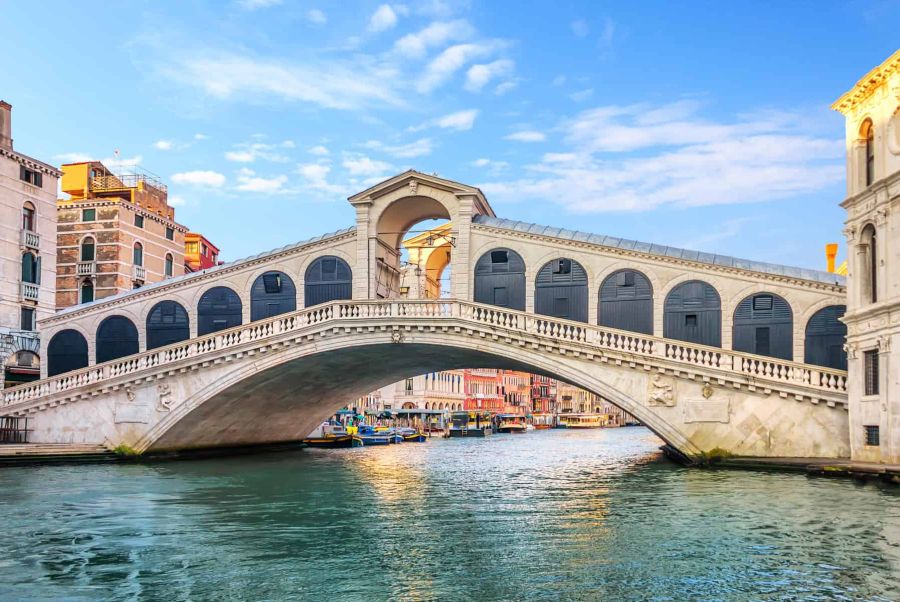
Tourist taxes in Venice can sneak up on you depending on what you do and where you go. Knowing how the system works at museums, landmarks, and big events helps you dodge surprise costs.
Museums and Cultural Sites
If you’re a museum fan, expect to pay both the usual entry fee and, if you’re a day-tripper, the city’s access fee. The “Venice Access Fee” applies if you visit for the day but don’t stay overnight. If you aren’t sleeping in Venice, budget for it.
Booking tickets in advance usually covers only the museum, not the access fee. I’ve seen people caught off guard at the ticket counter with an extra charge. Always check if your ticket bundles in the city tax.
Kids under 14 and Veneto residents are usually exempt. For the rest of us, these costs add up, so plan your museum visits carefully, maybe consider a city pass. If you want to skip the hassle, services that let you book attractions in advance are a lifesaver.
Landmarks: Rialto Bridge and Doge’s Palace
You can wander across the Rialto Bridge or through Venice’s outdoor squares without paying a tourist tax. Snap your photos, check out the Rialto fish market, take that canal selfie—no surprise fees.
But the moment you step inside places like Doge’s Palace, you’ll pay for the ticket, and if you’re a day visitor, the Venice Access Fee too. Sometimes people double up—paying for a guided tour and the city fee. Save yourself the hassle by booking tickets that bundle everything.
Group tours, whether for Doge’s Palace or a big landmark walk, usually include all the fees. I’m a fan, honestly—it keeps budgeting simple. If you want to know exactly what you’re paying, check out tours and activities that list costs upfront.
Events and Festivals
Venice’s events and festivals come with their own set of quirks—especially when it comes to taxes and fees. During busy times like Carnival, the Venice Biennale, or the historic regattas, the city tightens up access rules.
You’ll notice more checkpoints at the entrances to the old city, and sometimes the surcharges just to get in will climb higher than you’d expect. I’ll be honest: I once tried to breeze into Venice during Carnival without booking ahead, thinking I could just wing it. Nope. I ended up in a snaking line of tourists at the city gates, watching the smarter folks who’d pre-booked stroll right past.
If you’re heading to Venice for a festival, always book in advance—even if you think you’ll just wander around. Trust me, it’s the only way to dodge those last-minute price hikes or, worse, on-the-spot fines.
Many events include special tickets that bundle the city tax together, which makes things a bit simpler if you plan to participate. But if you’re just there to watch—say you’re hoping to catch a parade or fireworks—you’ll probably still have to register and pay the daily fee at a checkpoint, especially during peak festival days.
Always check the official festival websites and city advisories before you go. It’s the best way to avoid those surprise charges that can really sour your arrival.
Frequently Asked Questions
Venice takes its tourist tax pretty seriously. There’s a maze of rules, and honestly, it’s easy to get tripped up if you don’t pay attention.
If you’re planning a visit—or just have a nose for travel loopholes like I do—it’s smart to know what you’re up against. There are fees, exceptions, and a city that doesn’t mess around when it comes to enforcement.
What are the legal implications of evading the tourist tax in Venice?
Skipping the tourist tax isn’t just bending the rules—it’s illegal in Venice. Authorities actually go after violators, and I’ve heard from hosts who’ve had surprise inspections.
Try to dodge it, and you could end up with fines or even blacklisted by booking platforms. Not exactly the kind of souvenir you want to take home.
Can exemptions to the Venice tourist tax be granted under specific circumstances?
Exemptions do exist, but they’re pretty narrow. Usually, kids under 10, some students, and people visiting family for medical reasons can qualify.
I’d recommend checking with your host before you arrive. Some locals know the ins and outs better than the city’s own paperwork. I once saw a family convince their Airbnb host of their exemption—with a thick stack of documents and nerves of steel.
Enforcement has gotten a lot tougher lately. Local officials now coordinate with accommodation providers, and digital systems flag unpaid bookings.
If you’re staying at a hotel or a licensed rental, staff will usually ask for the tax at check-in or check-out. I’ve even watched hotel clerks refuse to hand over room keys until guests paid up.
Are there different tourist tax rates depending on the type of accommodation in Venice?
Absolutely. Hotels, hostels, and short-term rentals like Airbnb all have their own rates. The fancier the place, the more you’ll pay per night.
Location plays a role too. Central Venice spots generally charge more than properties on the outskirts or on the islands. I always dig into the fine print before I book—those differences can really add up if you’re staying for more than a night or two.
How has the tourist tax in Venice changed over the past years?
Venice rolled out the tourist tax back in 2011. Since then, the city has tweaked rates and rules several times, especially as crowd control has become a bigger issue.
Just in the past couple of years, Venice added not just steeper overnight taxes, but also new entry fees on certain high-traffic days. It keeps you guessing, honestly. Now I always double-check city and accommodation websites before I plan any Italian trip.
What are the penalties for not paying the tourist tax while staying in Venice?
If you skip the tax, the city’s not shy about handing out fines. The amount varies depending on your situation, but honestly, it’s usually a lot steeper than the tax itself.
Trying to talk your way out of it? Good luck. I’ve watched a few travelers get into heated debates with hotel staff at check-out, and it never ends well. Personally, I wouldn’t risk the headache—Venetian bureaucracy isn’t exactly known for its flexibility.



